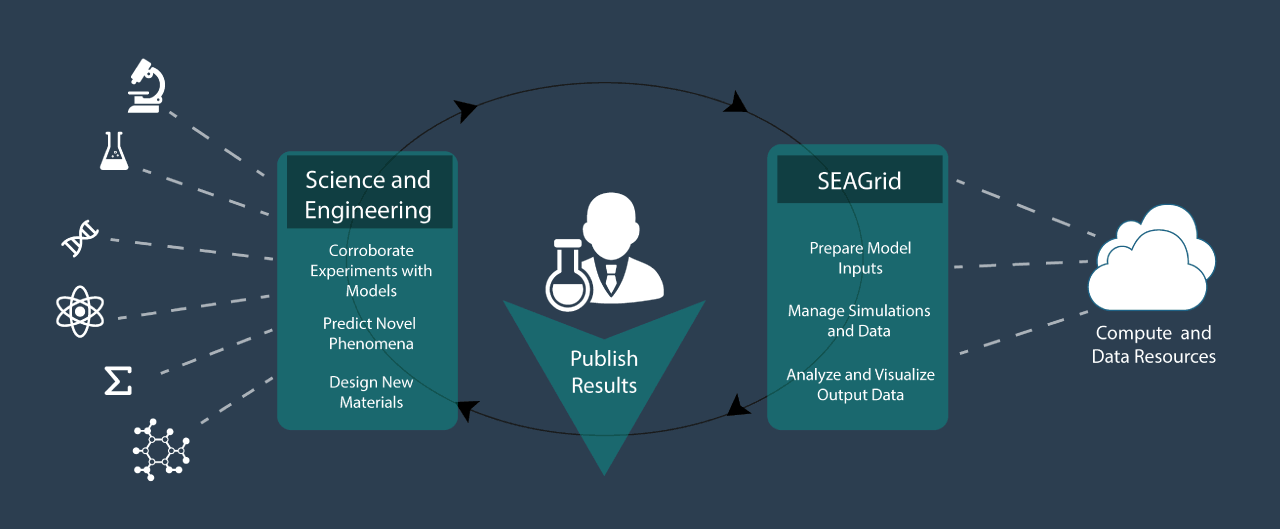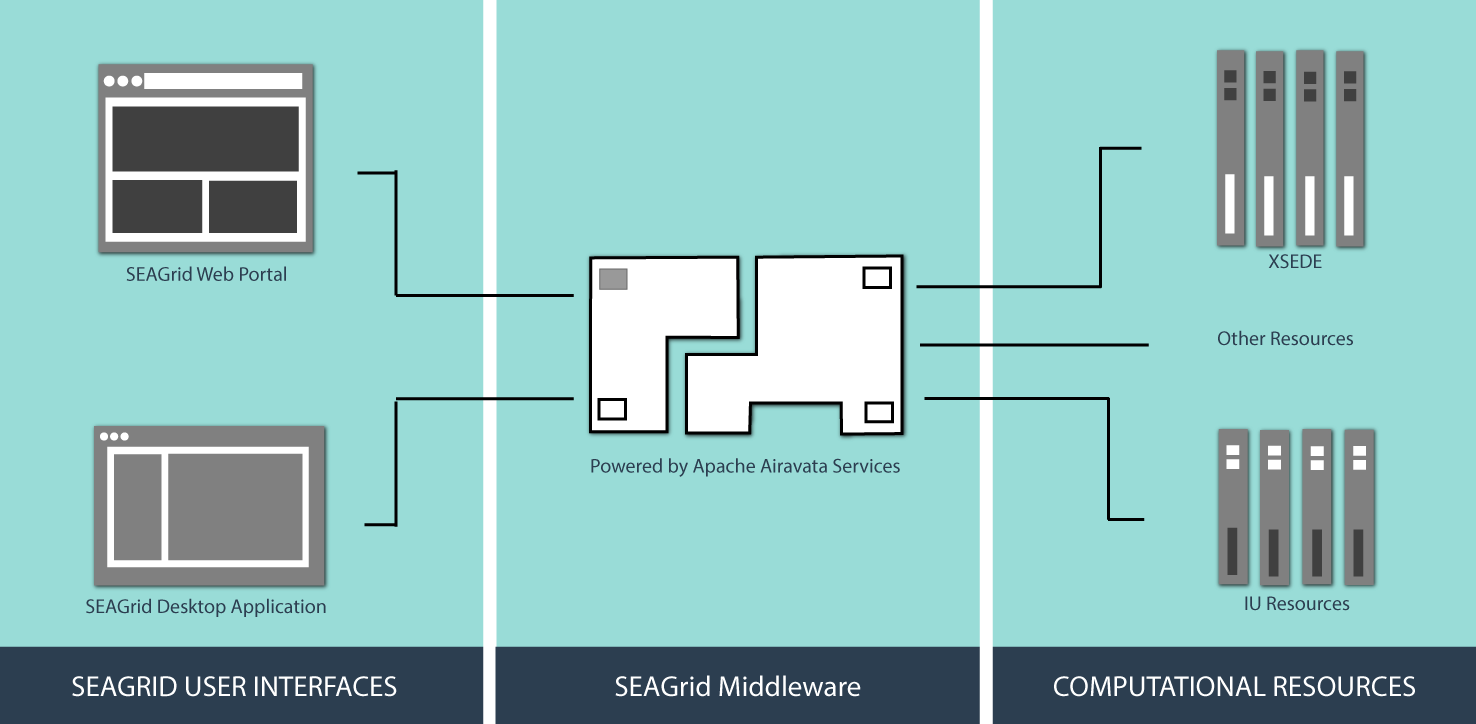
 Features
Features
The Science and Engineering Applications Grid (SEAGrid) empowers researchers to easily use scientific applications deployed across a wide range of supercomputers, campus clusters, and computing cloud. SEAGrid features both a powerful desktop client and go-anywhere Web application. SEAGrid helps scientist create model inputs, simplifies access to computing resources, enables visualizations of outputs, and provides archives for simulation data.
Computational Chemistry
Optimize and characterize molecular and periodic structures and predict thermodynamics and kinetics using computational chemistry applications using Ab initio, Semi-empirical, Force-field based codes such as Gaussian, Gamess, Tinker, DFTB+.
Molecular Dynamics (MD)
Time evolution of large material and biological systems to predict dynamic structural and energetic characteristics using Applications such as Lammps, Amber, NAMD using mostly empirical force fields including reaction force fields.
Structural Mechanics
Finite element analysis of engineering structures and components for modeling static and low-speed dynamic events both in the time and frequency domain using applications such as Abaqus.
Fluid Dynamics
Modeling flow of gases and liquids under various conditions using applications such as Nek5000 and OpenFOAM.
For a full list of current SEAGrid supported applications and computing resources, see SEAGrid Applications.
 DNA
DNA




